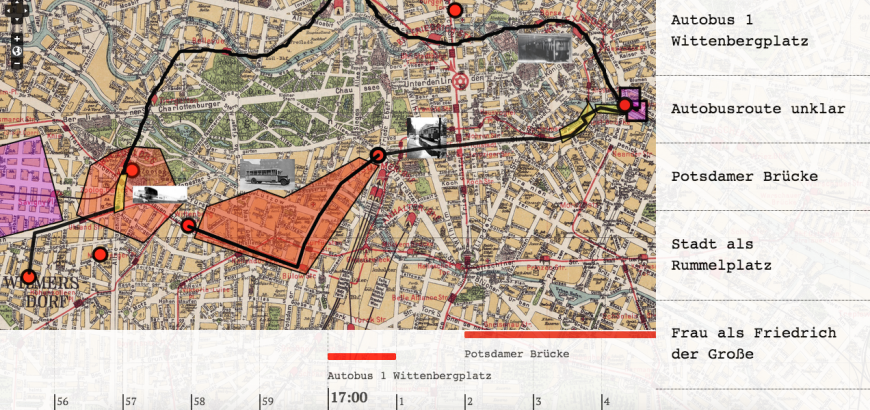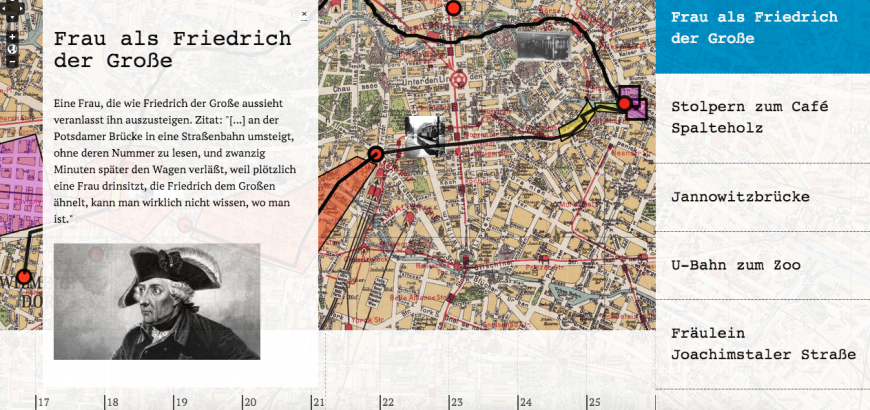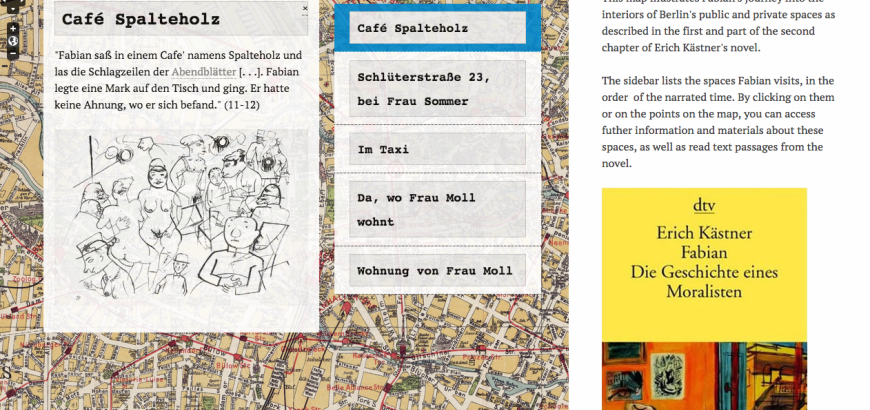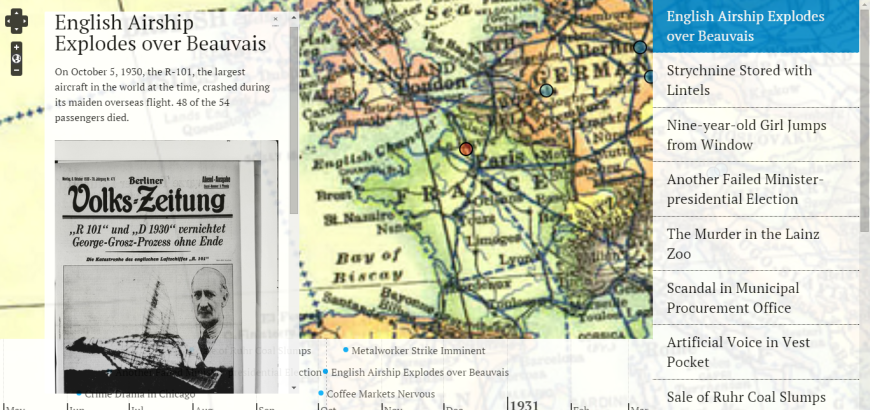In June, two Germanics graduate students and one faculty member (Olivia Albiero, Verena Kick, and Ellwood Wiggins) attended a week-long class on "Text Mapping" at the Digital Humanities Summer Institute at the University of Victoria, British Columbia. There, they received training in an online GIS mapping tool, "Neatline," that can help to display the results of research and enhance student projects for the undergraduate curriculum.
To practice using the tool, they conceived of a project to "map" the first chapter of Fabian (1931), the famous Großstadtroman by Erich Kästner, which is set in Berlin during the last years of the Weimar Republic. The chapter sets the tone and agenda for the entire novel. At first, the protagonist is sitting in a cafe reading headlines from around the world. He then careens through the city in a mad and aimless treck involving every possible means of transportation. Finally, he experiences the extremes of Berlin's famous counter culture in mysterious locales. The participants decided to depict these three aspects of the chapter with three different types of interactive maps: one tracking Fabian's movements through Berlin; one constructing the interior spaces he visits; and one displaying the location and timeline of the news headlines he notices in the opening paragraph.
You can see screen shots of the websites the participants built in the slideshow above. Unfortunately, the University of Washington Library does not provide server space or support for Omeka, the platform required for Neatline, so the interactive websites, which contained a wealth of images and information, will be consigned to the dustheap of lost digital debris.
Students in the course also composed blog entries reflecting on whether and how digital visualization added to their understanding of the texts under examination. You can see links to the blogs on the three Fabian projects below:
- Fabian's Path through Berlin (Verena Kick)
- Fabain's Interior Spaces (Olivia Albiero)
- Fabian's World in Headlines (Ellwood Wiggins)
The participants and the Department of Germanics are grateful for the support of the Simpson Center for the Humanities, without which their attendence in this stimulating course would have been impossible.






